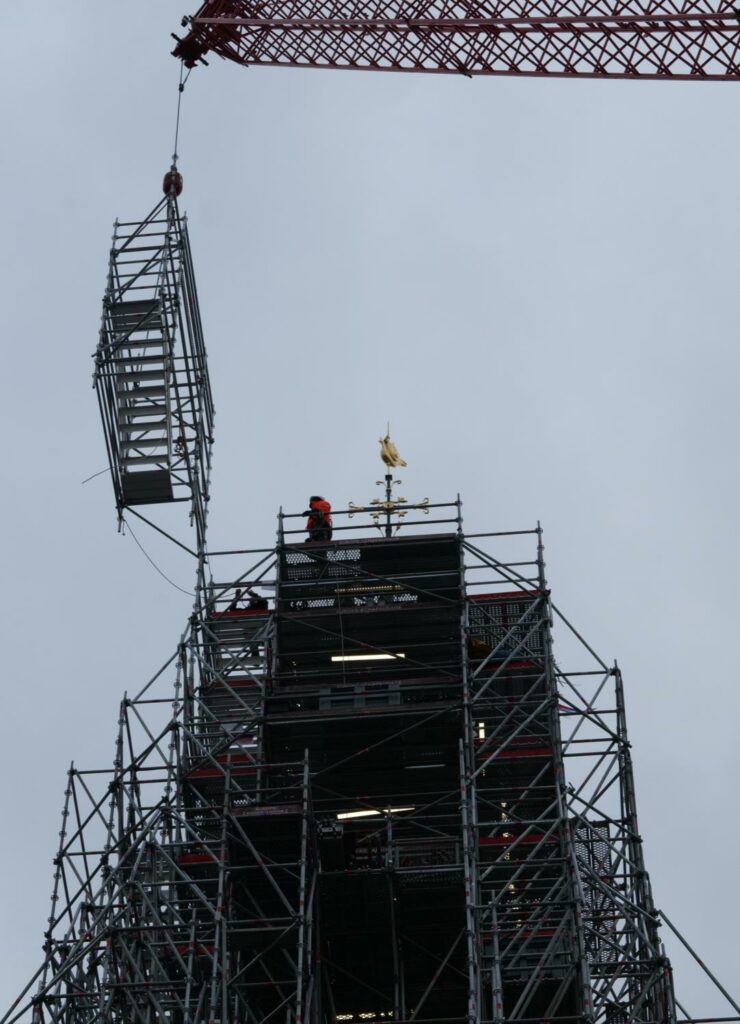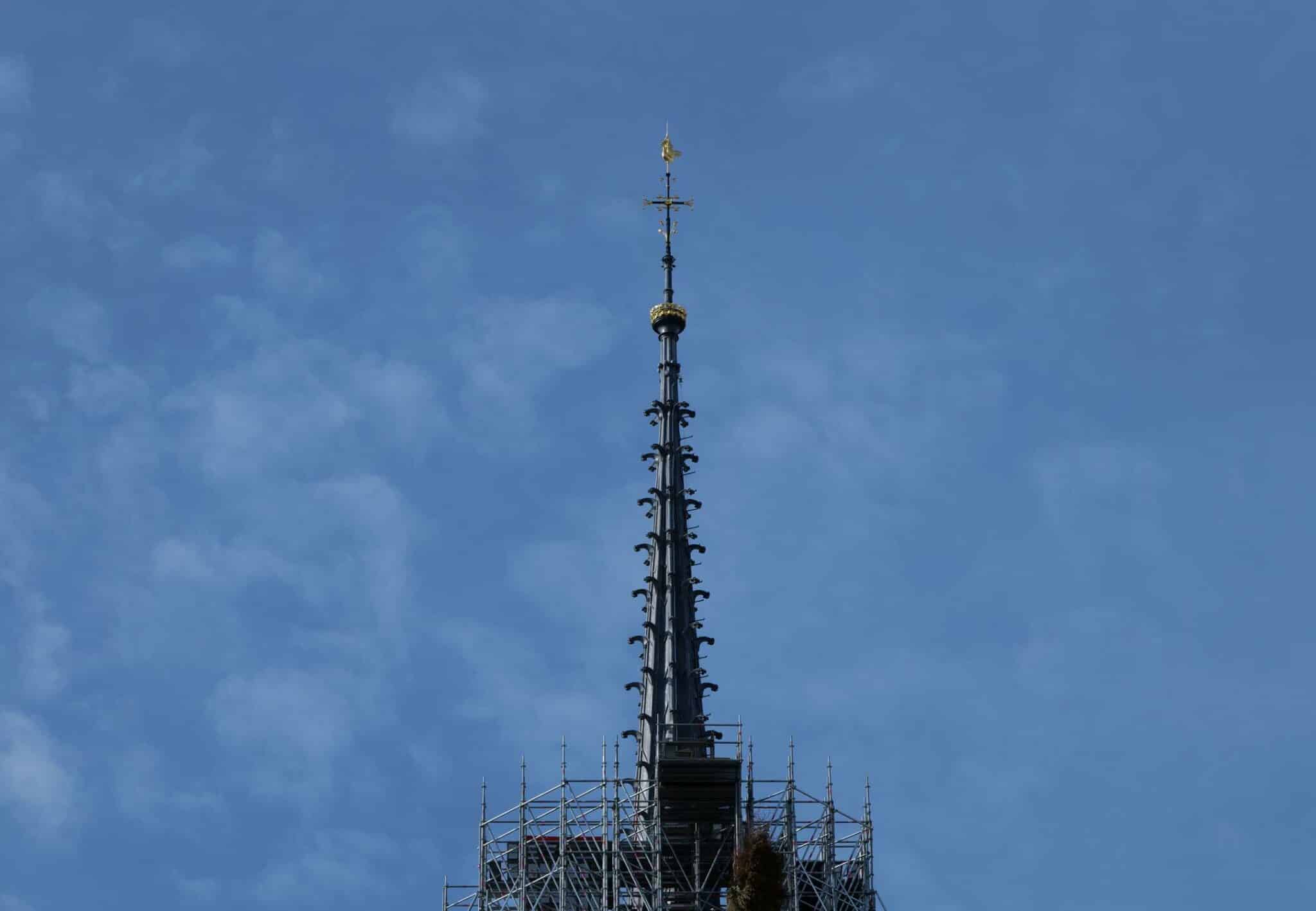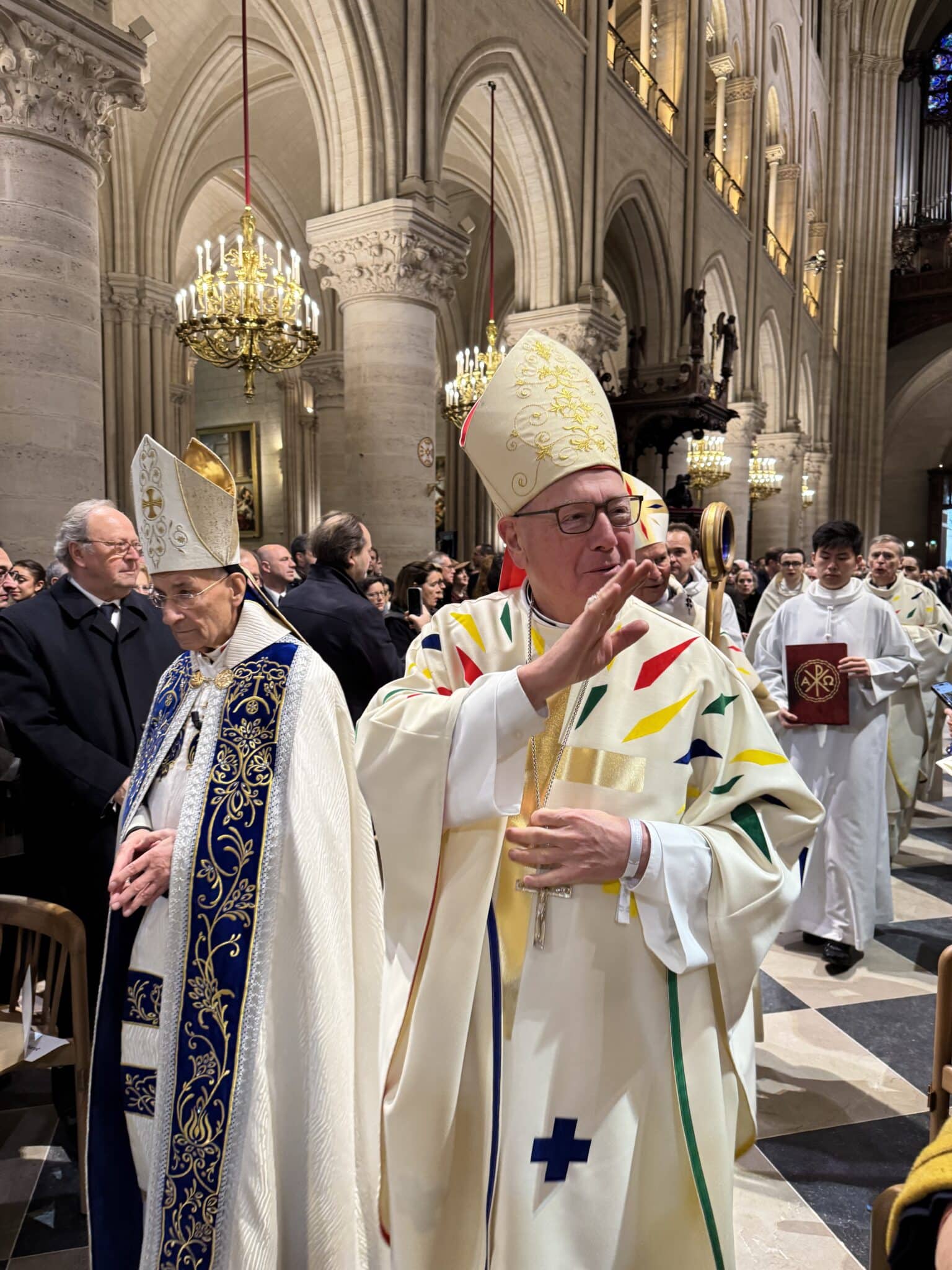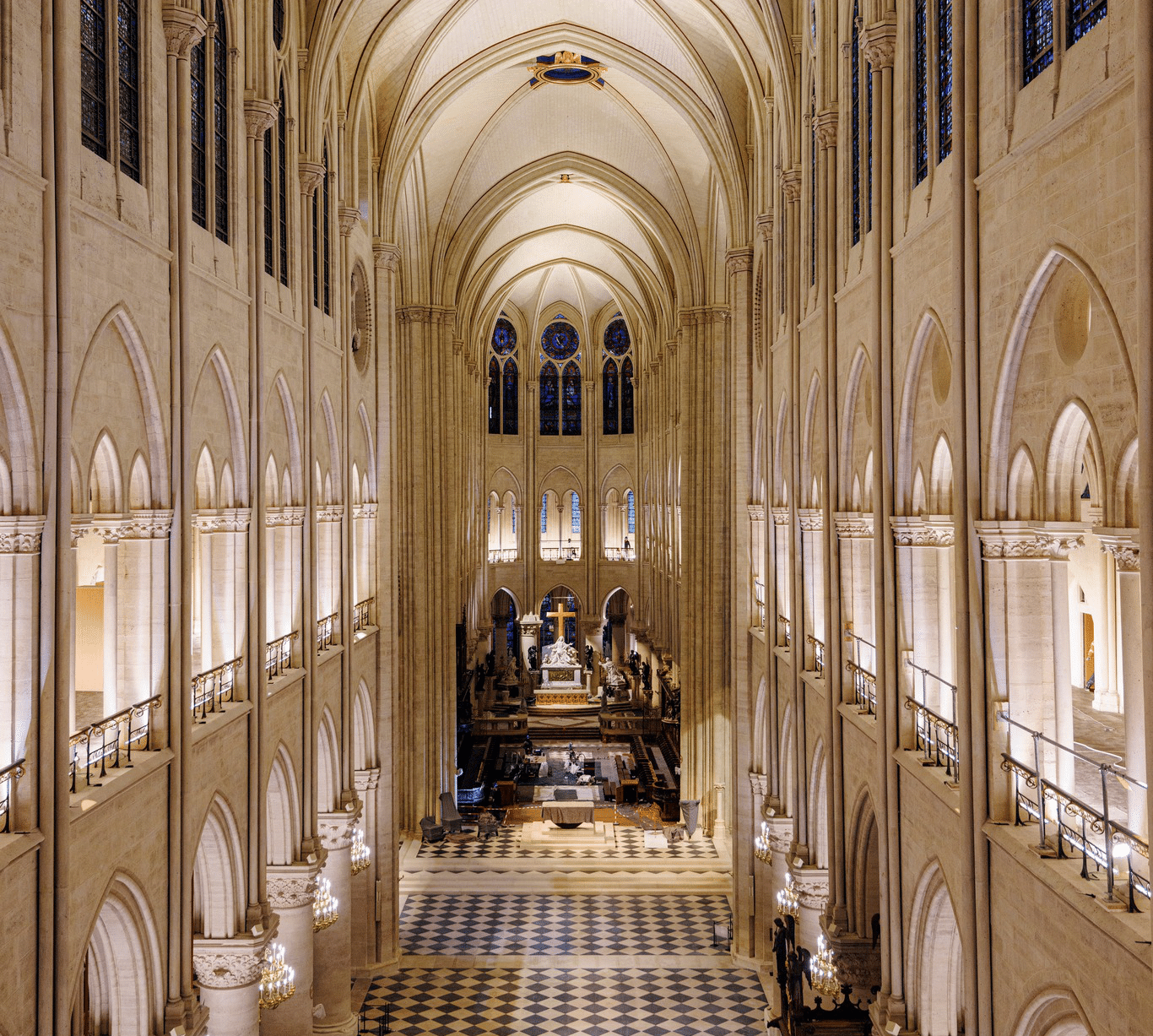Completion of the Spire’s Covering
In early February, a significant milestone was reached in the restoration of Notre Dame Cathedral‘s spire. The covering of the spire was completed, marking a pivotal moment in the reconstruction efforts. This achievement allowed the iconic silhouette of the spire to once again grace the Paris skyline, offering a glimpse of the cathedral’s future grandeur.
The completion of the spire’s covering is not just a visual triumph; it symbolizes the resilience and dedication of those involved in the restoration efforts. It is a testament to the skill and craftsmanship of the workers who have painstakingly recreated this historic masterpiece.
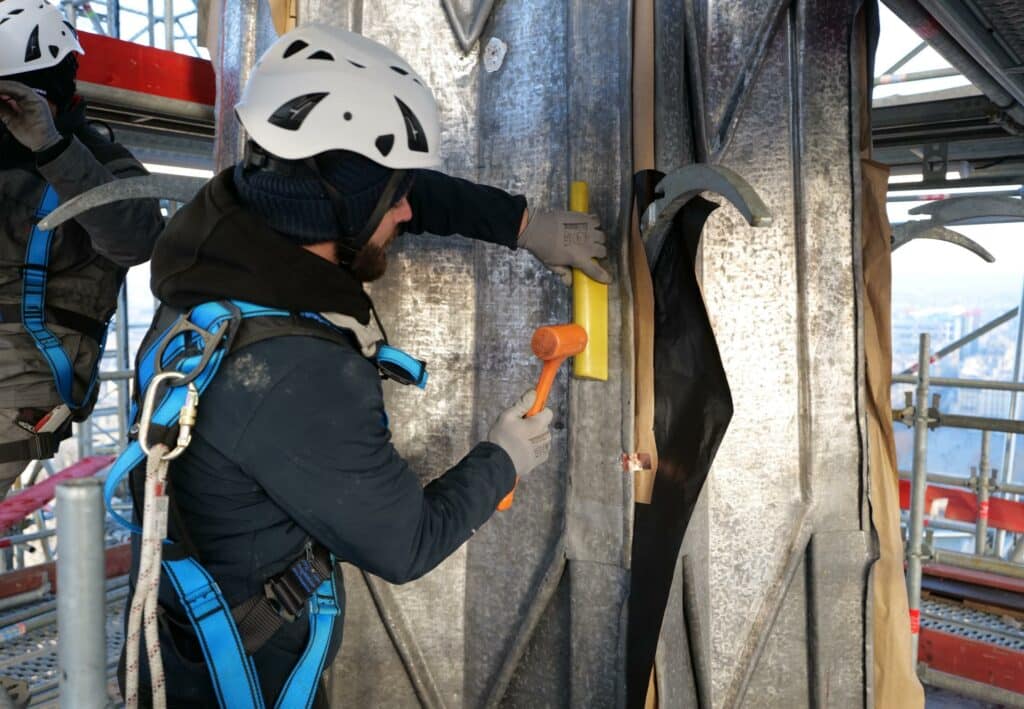
Dismantling the Scaffolding
Following the completion of the spire’s covering, the focus shifted to the removal of the scaffolding that had encased the upper levels of the structure. Since mid-February, the scaffolders have been meticulously dismantling the scaffolding, revealing the top of the spire in its final form. This careful process has allowed Parisians and visitors alike to witness the spire’s transformation, as it emerges from its scaffolded cocoon.
The dismantling of the scaffolding is a delicate operation, requiring precision and careful planning. Each piece of scaffolding must be removed in a specific order to ensure the safety of the structure and the workers. As the scaffolding comes down, the true beauty of the spire is revealed, inch by inch.
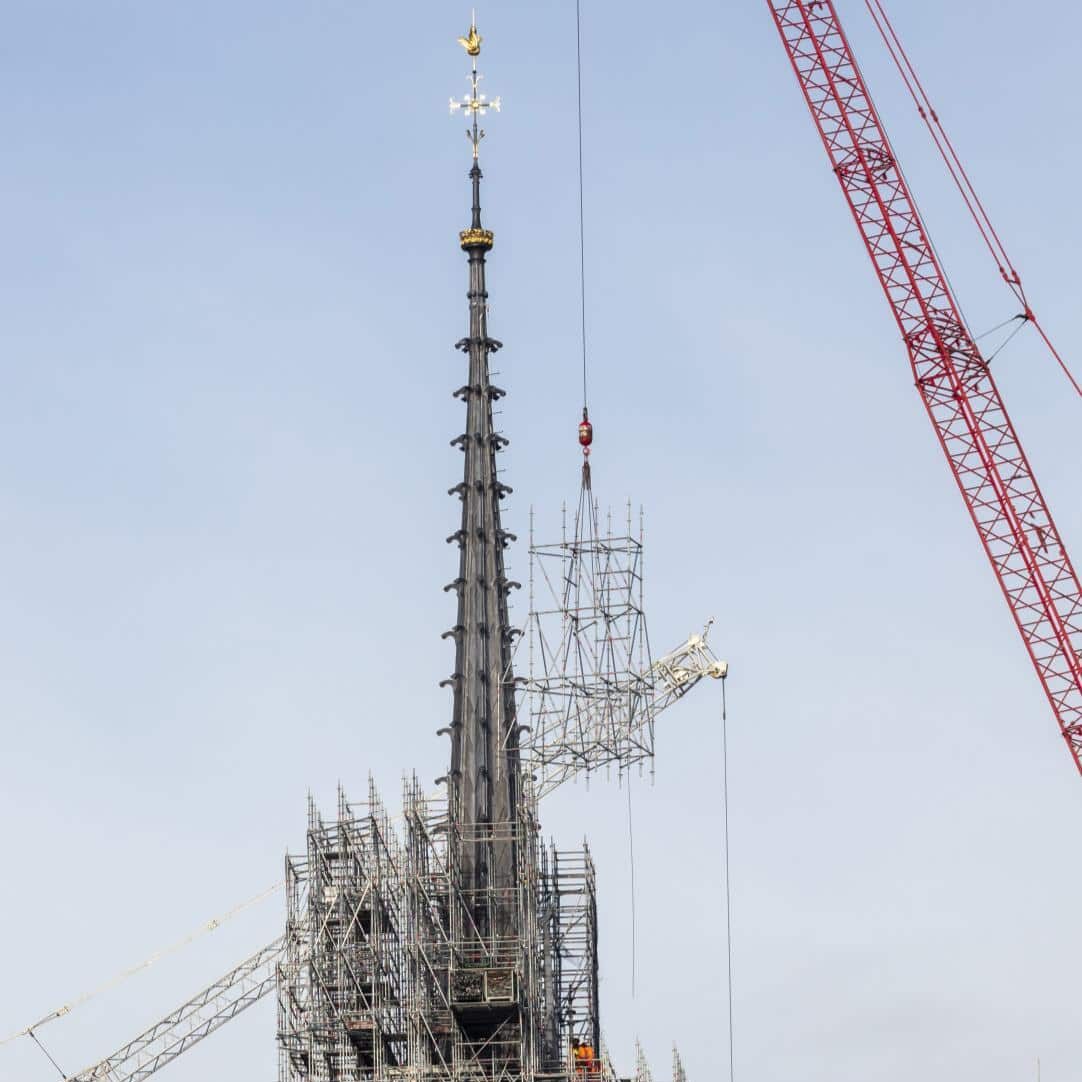
Revealing the Wooden Base
As the dismantling continues, the scaffolding will be removed down to the transept crossing vault. This will expose the lower part of the spire, still in its wooden state, providing a rare glimpse into the construction techniques of this historic monument. The removal of the scaffolding down to the ground will mark the end of this phase, setting the stage for the next steps in the restoration.
The wooden base of the spire is a critical component of the structure, providing support and stability to the entire spire. Revealing this part of the spire allows experts to inspect and assess the condition of the wood, ensuring that it is strong and durable enough to withstand the elements for centuries to come.
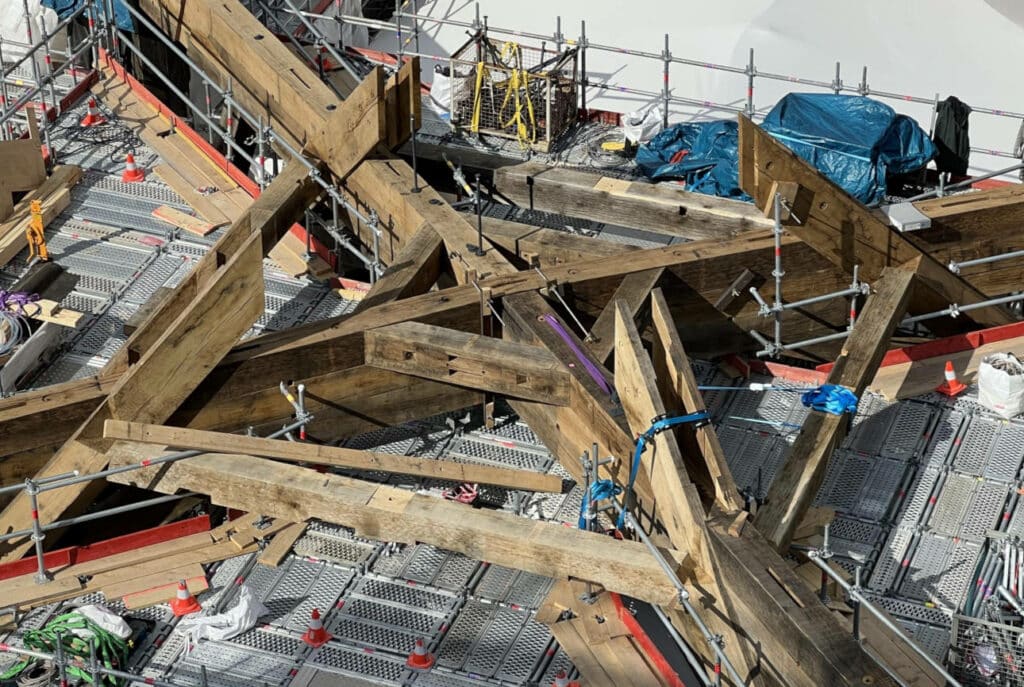
Preparing for the Final Touches
Once the last of the cathedral’s vaults has been sealed at the transept crossing, and the scaffolding has been completely dismantled, a new, lighter scaffold will be erected. This will facilitate the completion of the covering of the base of the spire, ensuring its protection and stability for generations to come.
The final touches on the spire are crucial for its long-term preservation. The new scaffold will allow workers to access the base of the spire safely and efficiently, completing the covering and adding any final decorative elements. This phase of the restoration is a delicate balance between preserving the historical integrity of the spire and ensuring its durability in the modern world.
As we witness the spire of Notre Dame Cathedral re-emerge in its full glory, it’s important to remember the intricate work that continues behind the scenes. The roofers, taking over from the carpenters, are now meticulously covering the wooden spire with a thin layer of lead, ensuring its long-term protection. This delicate process, along with the fitting of numerous ornaments designed by Viollet-le-Duc, adds a unique grace and originality to the structure. Learn more about the roofers’ work on Notre Dame’s spire needle.
The restoration of Notre Dame Cathedral’s spire is a symbol of hope and resilience. It serves as a reminder of the power of human ingenuity and the importance of preserving our cultural heritage for future generations. As the spire stands tall against the Paris skyline, it is a testament to the spirit of the city and the enduring legacy of this magnificent cathedral.
